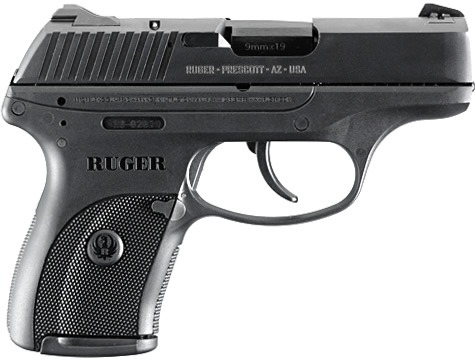Not long ago I stumbled into a Ruger LC9. I am not a fan of the .380 or Ruger’s LCP necesarily, but I think they did pretty well with the LC9. The size is in that “not too small, not too big” range that I think most people who carry a gun are looking for. Obviously, you give something up for that size in the 7+1 capacity but the shootability is there for the operator with a deft hand.
Usually a gun this size will give something up in the shootability department. A poor trigger, poor sights, or something along those lines that really limits the capability of the pistol. Not so with the LC9. While some may complain about the DAO-ish trigger system and a long heavy trigger pull, I find the trigger pull to be easy to master. It is not long enough, nor heavy enough to cause any sort of performance shortcoming like some DAO triggers can. My only complaint about the little Ruger’s trigger is the “false” reset, or double click reset when releasing the trigger to pull it again. For a shooter who has spent most of their time behind a Glock using the Glock’s very distinguishable reset while running the trigger this causes problems. For shooters not as accustomed to using the trigger reset may not have as much trouble with it. The reset on the Ruger is nothing that could not be overcome with moderate focused practice and trigger time.

The sights, while perhaps smaller than some on fullsize pistol are still very adequate for the job. I find them to be easy to track when shooting at speed, and of sufficient size and good enough design to wring out some accuracy when needed. I shot one of my standard practice drills (Dot Torture) with the LC9 at 5 yards and scored almost on par with what I can do with a fullsize pistol. I think with a little more trigger time, performance numbers with the LC9 would be right there with performance numbers of a full size pistol.
The other feature that may turn off some people is the external safety. It seems like people have developed a dislike for external safeties, or maybe only like external safeties on 1911 type pistols. I don’t find the safety difficult to operate, assuming the correct shooting grip is used. With a correct, high tang grip the shooting hand thumb runs over the top of the safety (similar to the above video) and the safety naturally disengages as part of establishing the grip. When re-engaging the safety it is important to keep in mind the safety lever’s pivot point. Unlike the safety on a 1911 where the pivot point is at the rear of the lever, on the LC9 the pivot point is at the front of the lever. This means that when trying to push the safety back on (up), upward force should be applied towards the rear of the lever, not the front.
While my round count through the pistol is still relatively low, if it proves over the long run it will be a very good pistol. All the correct features are there, good sights, decent trigger, great size…but only time will tell if it can prove itself reliable.

Specs:
| Slide Material: | Through-Hardened Alloy Steel | Slide Finish: | Blued |
| Barrel Material: | Alloy Steel | Barrel Finish: | Blued |
| Barrel Length: | 3.12″ | Length: | 6.00″ |
| Width: | 0.90″ | Height: | 4.50″ |
| Weight: | 17.10 oz. | Sights: | Adjustable 3-Dot |
| Capacity: | 7+1 | Grip Frame: | Black, High Performance, Glass-Filled Nylon |
| Twist: | 1:10″ RH | Grooves: | 6 |
| MA Approved & Certified: | No | CA Approved: | Yes |
| Suggested Retail: | $443.00 |
By: Nate Parker

Leave a Reply